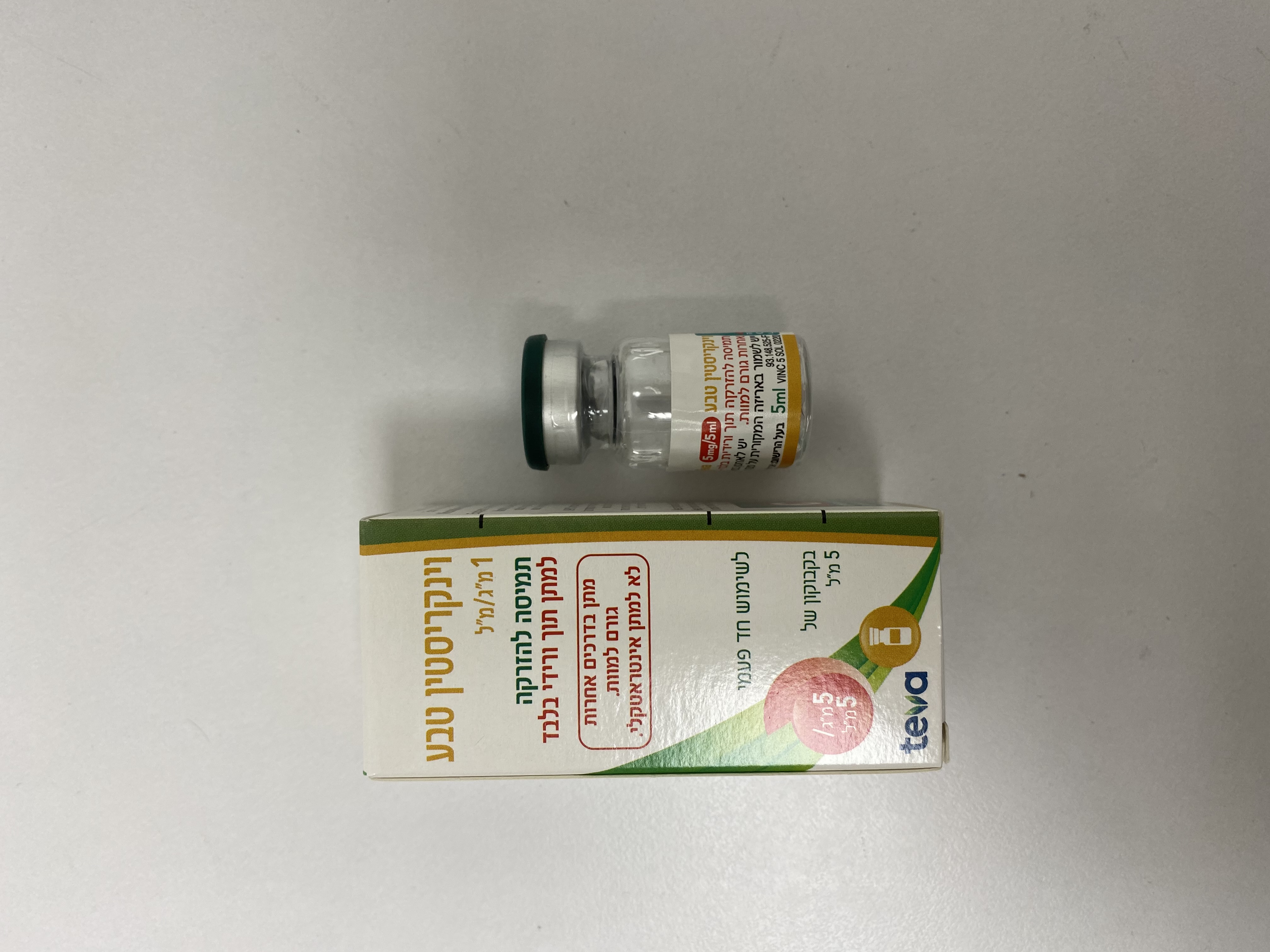Quest for the right Drug

וינקריסטין טבע VINCRISTINE TEVA (VINCRISTINE SULFATE)
תרופה במרשם
תרופה בסל
נרקוטיקה
ציטוטוקסיקה
צורת מתן:
תוך-ורידי : I.V
צורת מינון:
תמיסה להזרקה : SOLUTION FOR INJECTION
עלון לרופא
מינוניםPosology התוויות
Indications תופעות לוואי
Adverse reactions התוויות נגד
Contraindications אינטראקציות
Interactions מינון יתר
Overdose הריון/הנקה
Pregnancy & Lactation אוכלוסיות מיוחדות
Special populations תכונות פרמקולוגיות
Pharmacological properties מידע רוקחי
Pharmaceutical particulars אזהרת שימוש
Special Warning עלון לרופא
Physicians Leaflet
Interactions : אינטראקציות
4.5 Interaction with other medicinal products and other forms of interaction Interactions common to all cytotoxics Due to the increase of thrombotic risk in case of malignancies, the use of anticoagulative treatment is frequent. The high intra-individual variability of the coagulability during diseases, and the eventuality of interaction between oral anticoagulants and anticancer chemotherapy require, if it is decided to treat the patient with oral vitamin K antagonist , to increase frequency of the INR (International Normalised Ratio) monitoring. Inhibitors of cytochrome P450 isoenzymes and P-glycoprotein Vinca alkaloids are metabolised by the cytochrome P450 3A4 iso-enzyme (CYP3A4) and are substrates for P-glycoprotein. Therefore increased plasma concentrations of vincristine can occur when CYP3A4 and P-glycoprotein inhibitors, such as for instance ritonavir, nelfinavir, ketoconazole, itraconazole, erythromycin, cyclosporine, nifedipine and nefazodone, are administered concomitantly. Concomitant administration of itraconazole and vincristine has been associated with an earlier onset and/or increased severity of neuromuscular side effects, probably related to inhibition of the vincristine metabolism. Concomitant administration of azole antifungals (e.g., itraconazole, voriconazole, posaconazole, isavuconazole and fluconazole) with vincristine may increase the plasma concentrations of vincristine, which can lead to an early onset and/or increased severity of neurotoxicity and other side effects (see section 4.4). Therefore, azole antifungals should be used with caution in patients receiving vincristine and should only be used when there are no alternative antifungal treatment options available or when the potential benefits outweigh the risks of the combination. Patients should be closely monitored for adverse effects with concomitant use. Nifedipine Care should be taken regarding the possible interaction between vincristine sulfate and calcium channel blockers, especially nifedipine. Concomitant administration of vincristine sulfate and nifedipine may cause a decrease in plasma clearance of vincristine sulfate with a risk of increased toxicity. Phenytoin and fosphenytoin It has been reported that concomitant administration of phenytoin and anti-neoplastic chemotherapy combinations, that contain amongst others vincristine, reduce the blood levels of phenytoin and increase the proconvulsant effect. This combination is not recommended. If it cannot be avoided, adjustment of the dose should be based on the blood level determinations. Other cytostatics Pharmacodynamic interactions can occur with other cytostatics: potentiation of therapeutic and toxic effect. Concomitant use of vincristine and other bone marrow depressive medicinal products such as doxorubicin (especially in combination with prednisone) can potentiate the depressive effects on the bone marrow. Asparaginase/isoniazid and other neurotoxic medicinal products When vincristine is used in combination with L-asparaginase, vincristine should be given 12-24 hours before administration of L-asparaginase, because a decrease in hepatic clearance of vincristine sulfate may result in cumulative hepatotoxicity. Because of the neurotoxicity of vincristine sulfate, other potentially neurotoxic medicinal products, such as ciclosporin and isoniazid should not be administered concomitantly. Vaccines/killed virus Because the normal immune system can be suppressed due to the treatment with vincristine, the formation of antibodies by the body may be reduced as a reaction to the vaccine. The time interval between the discontinuation of the use of the medicinal products that cause immuno-suppression and the recovery of the ability of the body to react to the vaccine is dependent on the intensity and the type of the immuno-suppressive products, the underlying disease and other factors; estimates vary from 3 months to 1 year. Vaccines/live virus Because the normal immune system can be suppressed due to the treatment with vincristine, the concomitant administration of a live virus vaccine may enhance the replication and the side effects of the virus vaccine, and/or the formation of antibodies by the body as a reaction to the vaccine may be reduced; these patients should only be immunised with the utmost caution after careful evaluation of the haematological status of the patients and only with the approval of the treating physician. The time interval between the discontinuation of the use of the medicinal products that cause immuno-suppression and the recovery of the ability of the body to react to the vaccine is dependent on the intensity and type of the immuno-suppressive products, the underlying disease, and other factors; estimates vary from 3 months to 1 year. Patients with leukaemia in remission should not receive live virus vaccine until at least 3 months after their last chemotherapy treatment. Digoxin The absorption of digoxin can be reduced in patients who are treated with chemotherapy. In some patients therefore the therapeutic effect of digoxin may be reduced. Therefore caution is needed when such combinations are administered and adjustment of the dose of digoxin may be needed. Mitomycin C Acute pulmonary reactions can occur. Radiotherapy Radiotherapy can enlarge the peripheral neurotoxicity of vincristine. Ciclosporin, Tacrolimus Excessive immunosuppression with risk of lymphoproliferation can occur. Other During concomitant administration of vincristine and colony-stimulating factors (G-CSF, GM- CSF) atypical neuropathies with stinging or burning sensations in distal extremities were reported more frequently. In patients with Wilms' tumour, severe liver toxicity was reported under the combination of vincristine and dactinomycin. In combination with bleomycin, vincristine can cause Raynaud syndrome in a dose-dependent manner.

שימוש לפי פנקס קופ''ח כללית 1994
לא צוין
תאריך הכללה מקורי בסל
01/01/1995
הגבלות
תרופה מוגבלת לשימוש בבתי חולים או אשפוז יום
מידע נוסף
